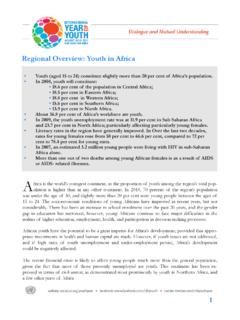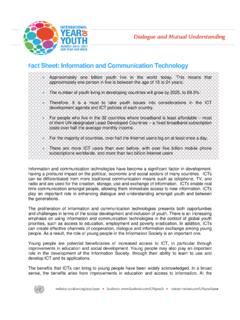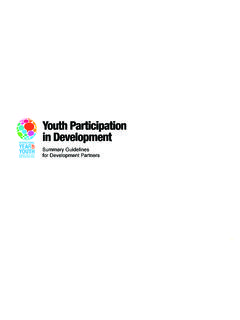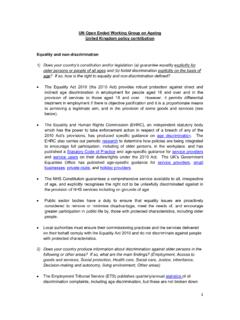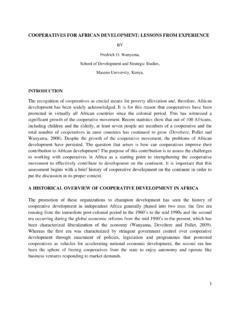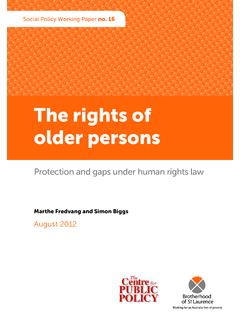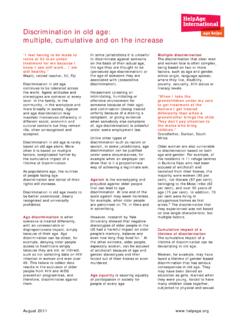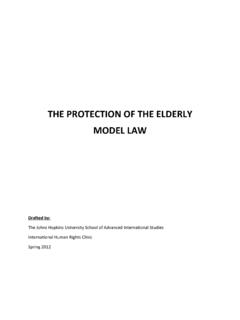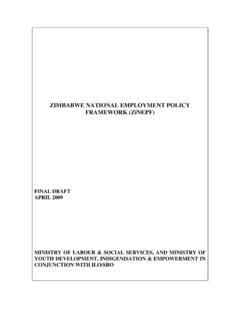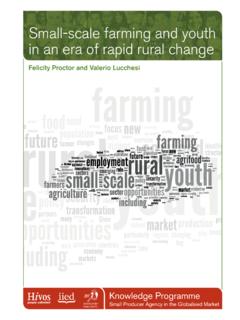Transcription of Fact Sheet: Youth and Education - DSPD Home page
1 Fact Sheet: Youth and Education 11% of the world's Youth (15-24 years old) are non-literate. Data from 2005-2008 indicates that in developing countries, the percentage of non- literate Youth is 13%, with Sub-Saharan Africa's percentage standing at 29%. By 2015, Youth non-literacy rates are projected to fall to 8% for the world and to 9%. in developing countries as a whole. However, Youth non-literacy rates in sub- Saharan Africa are projected to decline only slightly, lingering at 24%. In 2008, almost 74 million adolescents (10-19 years old) were not in school of any type.
2 This represents 1 in 5 adolescents (1 in 3 in sub-Saharan Africa). As of 2008, 1 in 3 adolescents (10-19 years old) are still in primary school. Vulnerable young people are often excluded from educational systems. Inclusive polices are needed to ensure access to Education for poorest Youth in cities and remote areas, Youth affected with HIV, refugee Youth , and migrant Youth . Commitments made at the international level, including the World Programme of Action for Youth , the Millennium Development Goals and the Education for All goals, identify Education as a key priority area for action.
3 Introduction Education is central to development and to the improvement of the lives of young people globally, and as such has been identified as a priority area in internationally agreed development goals, including the Millennium Development Goals and the World Programme of Action for Youth . Education is important in eradicating poverty and hunger and in promoting sustained, inclusive and equitable economic growth and sustainable development. Increased efforts towards Education accessibility, quality and affordability are central to global development efforts.
4 Despite significant improvements in increasing primary school enrolment in some regions, the Millennium Development Goal of achieving universal primary level Education by 2015 is unlikely to be met. Moreover, such improvements have not necessarily been followed by an equivalent transition to secondary Education , vocational training, non-formal Education or entry into the labour market, especially for girls and young women. Worldwide 11% of young people are non-literate, lacking basic numerical and reading skills, and as such lack the means to be able to sustain a living through full and decent employment.
5 With Youth unemployment and underemployment at persistently high levels worldwide, and with many young working poor lacking even primary-level Education , such Youth unemployment and underemployment rates act to jeopardize social inclusion, cohesion and stability. 2. There is a need to align Education policies, curricula and training programmes in a people- centric way, with national development priorities and needs, international development strategies and labour market requirements. Doing so will promote the situation of young people, fight extreme poverty, and allow for a maximization of the benefits of globalization for Youth .
6 The persistent gender gap in Education hinders Youth development. Gender inequity in Education is characterized by, among other things, lack of access to and availability of gender- sensitive educational infrastructure, materials and training programmes, as well as a high dropout rate amongst secondary school aged girls. Knowledge and Education are key factors to the full and effective participation of Youth in the processes of social, economic and political development. Increased attention to improving participation rates of young people, particularly marginalized Youth , is needed to ensure that they acquire the knowledge, capacities, skills and ethical values needed to fulfill their role as agents of development, good governance, social inclusion, tolerance and peace.
7 Greater focus on universal access to Education , quality Education , human rights Education and learning, as well as increased access to the complementary nature of vocational, formal, informal, and non-formal educational practices in a non discriminatory manner, particularly for young women, is key for young people to be able to address their aspirations and challenges, fulfill their potential, and influence current and future social and economic conditions and opportunities. United Nations and Education Obtaining universal Education is a priority for the United Nations system.
8 In 1995 governments committed to the World Programme of Action for Youth and identifed Education among its 15. priority. In doing so, they highlighted the need for improving the level of basic Education , skill training and literacy among all Youth , including young women and Youth in distressed circumstances.'. In addition, at the World Education Forum (Dakar, Senegal, 2000), 164 governments pledged to achieve Education for All (EFA) by launching a world movement to meet the basic learning needs of all children, Youth and adults.
9 Participants at the Forum identified six goals to be met by 2015, with young people being the focus of Goal 3:'Promote learning and life skills for young people and adults'. The goal commits countries to ensure that the learning needs of all young people and adults are met through equitable access to appropriate learning and life skills programmes. However, the realization of all six goals provides the best opportunity and environment for Youth to benefit from Education . 3. At the 62nd session of the General Assembly in 2007, the critical role of both formal and non- formal Education in the achievement of poverty eradication and other development goals was reiterated.
10 Also emphasized was the need for basic Education and training for eradicating illiteracy; the importance of commitment in striving for expanded secondary and higher Education , especially for girls and young women; and the creation of human resources and infrastructure capabilities and the empowerment of those living in poverty. The United Nations primarily concentrates its efforts in Education in five key areas: promoting policy dialogue, monitoring progress, carrying out advocacy, developing capacities and mobilizing funding.
